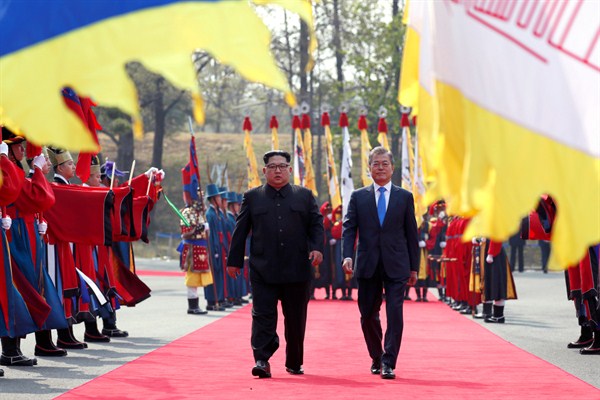Last Friday’s historic meeting between South Korean President Moon Jae-in and North Korean leader Kim Jong Un, the first inter-Korean summit in over a decade and only the third since the nation was divided after World War II, was arguably long on symbolism and short on substance. But the symbolism was extraordinary. Kim came to the meeting across the heavily fortified boundary dividing the Korean Peninsula, the first North Korean leader to set foot in the South. He and Moon shook hands at the concrete curb that marked the boundary, and—in an apparently unscripted moment—Kim took Moon’s hand and the two stepped briefly into the North, then back again.
The two leaders’ little unification dance showed the division between two bitter foes as something arbitrary and absurd, a meaningless imaginary line easily crossed and re-crossed. The meeting in Panmunjom in the Demilitarized Zone, where peace talks have been held on and off since the Korean War raged in 1951, was the first inter-Korean summit not held in Pyongyang. It was the first summit with North Korea represented by Kim Jong Un and not his father, Kim Jong Il. Perhaps most important, it was the first inter-Korean summit in the era of a nuclear-armed North Korea and an American president willing, even eager, to talk to the North Korean leader.
As for substance, the summit produced a “Panmunjom Declaration” that was the longest and most detailed joint statement the two Koreas have issued in the decades since the first North-South Communiqué of July 4, 1972. Some of it was boilerplate: vague commitments to “a new era of peace,” ceasing “hostile acts” against each other, reducing military tension and confirming the common goal of a “nuclear free Korean Peninsula” without any specific timetable or reference to North Korea’s nuclear program.

